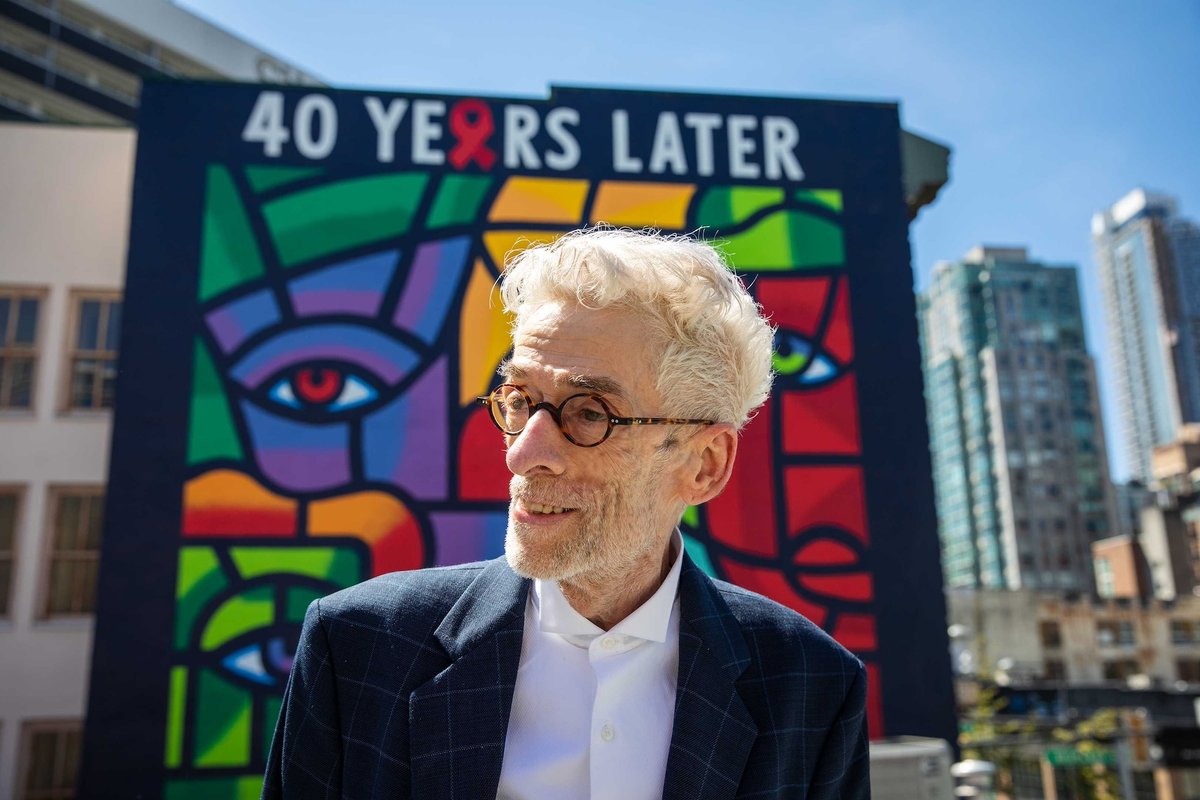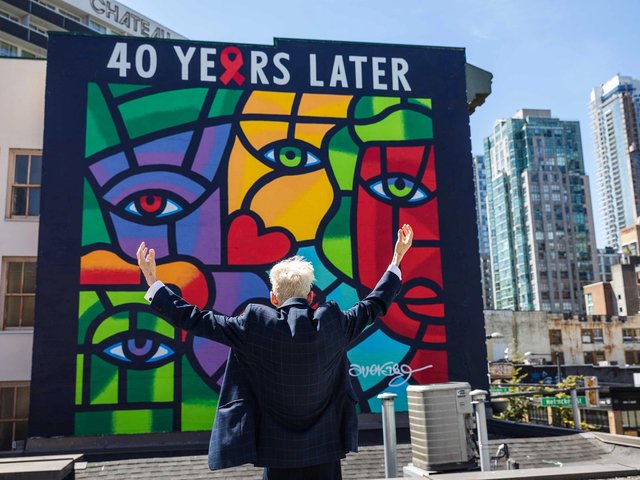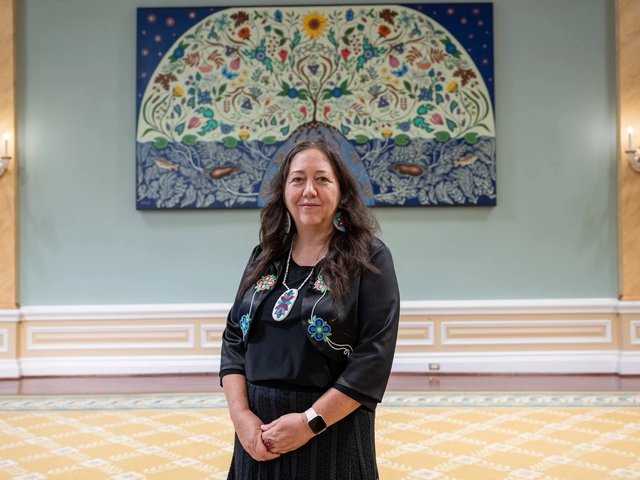The Canadian artist Joe Average has died at age 67. The artist died in his sleep on 24 December at his home in Vancouver, according to social media posts by his friends and family.
Diagnosed with Aids in 1987, Average dedicated his life in equal measure to inspirational art that celebrated the human spirit and activism and philanthropy for those living with Aids and the larger LGBTQ+ community. Inspired by the West Coast post-punk outsider art scene, the artist—who was born Brock David Tebbutt in Victoria in 1957—took on the name “Joe Average”. He told the Vancouver Sun his choice of pseudonym was influenced by a 1960s magazine character dubbed “the average Joe”, adding: “I’m 5ft 8in, I’m average lookin’, got a C average in school. I thought, ‘This is perfect!’”
Average became a household name following his HIV diagnosis at age 27. Assuming that he had mere months to live, he challenged himself to live off his art and began mounting shows in his apartment in Vancouver’s West End.
Since then, his signature Pop art imagery—which has led many to liken him to a Canadian Keith Haring—has appeared in paintings, prints, murals, postage stamps and municipal banners. Average was feted by the likes of the late Aids activists Princess Diana and Elizabeth Taylor.
He won numerous awards and honours for his efforts as both an artist and an activist, including a Governor General award for his volunteer work and the Queen’s Golden Jubilee medal for his community contributions. A few weeks before his death, he was invited by the Governor General to receive the Order of Canada, the country's highest honour.
In 2002, then Vancouver mayor Philip Owen issued a civic proclamation to designate 3 November as “Joe Average Day”, acknowledging his efforts to fight homophobia and assist Aids charities such as A Loving Spoonful.
The same week as his 2021 mural marking the 40th anniversary of the first reported cases of Aids in the US was unveiled, Average was awarded the Order of BC, the province of British Columbia’s highest form of recognition.That mural, One World, One Hope—40 Years Later now adorns the North wall of Helmcken House, a residence in downtown Vancouver that provides affordable housing for people living with HIV and Aids.
The design’s stained-glass effect and optimistic, brightly coloured, cartoon-like figures remain compelling three decades after Average first conceived it. The image was originally Average’s winning entry for a poster contest to mark Canada’s first national Aids awareness week. The design then became the basis for an image Average painted in 1994, entitled One World, One Hope, commissioned for the 11th international conference on Aids, held in Vancouver in 1996. The image was also used for Canada’s first postage stamp recognising the epidemic.
“The stained-glass effect represents the fragility of all mankind in the face of Aids,” the artist told The Art Newspaper at the time. “The heart at the centre represents love, which I have always believed is the only thing that can move us forward and truly end this epidemic.” When the Aids conference opened in 1996 at BC Place Stadium, a huge quilt version of his image was unveiled. “That was when I realised it was something powerful, that touched people, and it gave me chills.”
He added: “I hope this reminds everyone of the work that is still needed in education, stigma removal and funding as we continue to search for crucial treatments and vaccines.”
While Average’s dedication to the cause was serious, his demeanour was irreverent. He was known for his sense of humour and quickly became the unofficial mayor of the West End, the historic Vancouver neighbourhood that was home to the city’s first “gay village”. Average was the marshal of the annual Pride Parade for several years running, and his murals have become integral parts of Vancouver’s civic identity.
His friend and former gallerist Michael Harding accompanied Average on his trip to Ottawa in early December to receive the Order of Canada. He says: “At the airport on the way to Ottawa, he gave the royal wave from his wheelchair and imitated the late Queen’s voice saying he was off to meet the Governor General. He had everyone in stitches.”
The award, Harding says, was “a fitting accolade for a life of passionate service, creativity and of being able to survive HIV/Aids for 40 years. His legacy of love and passion and creativity lives on.”




